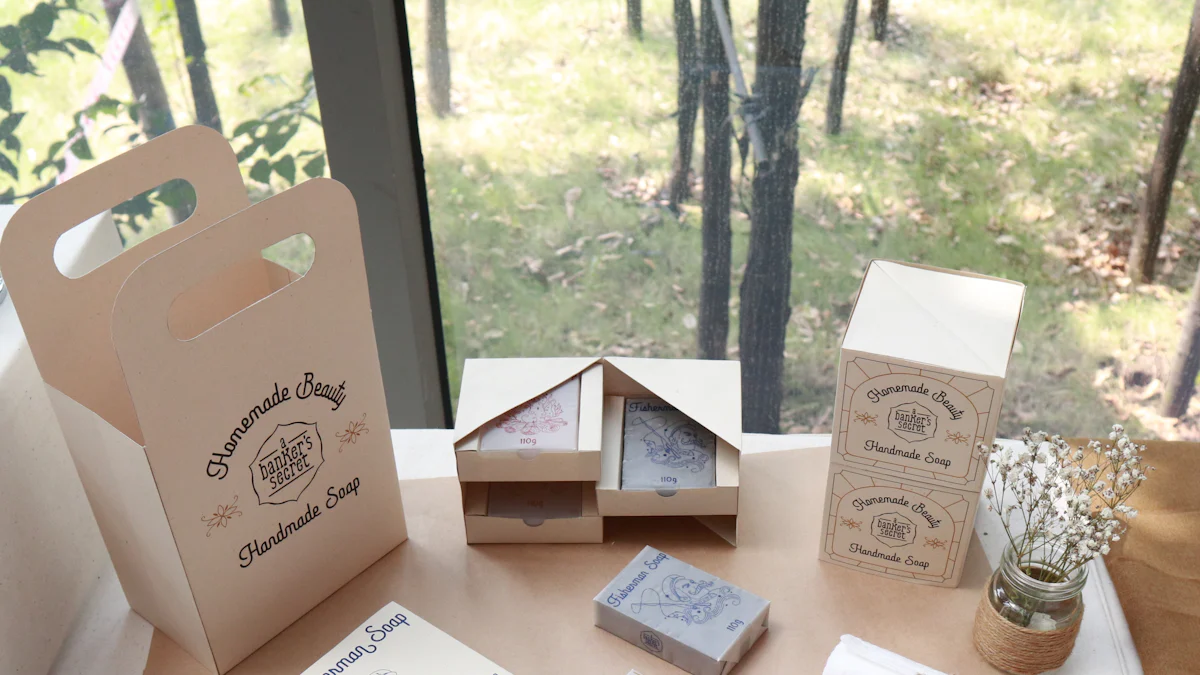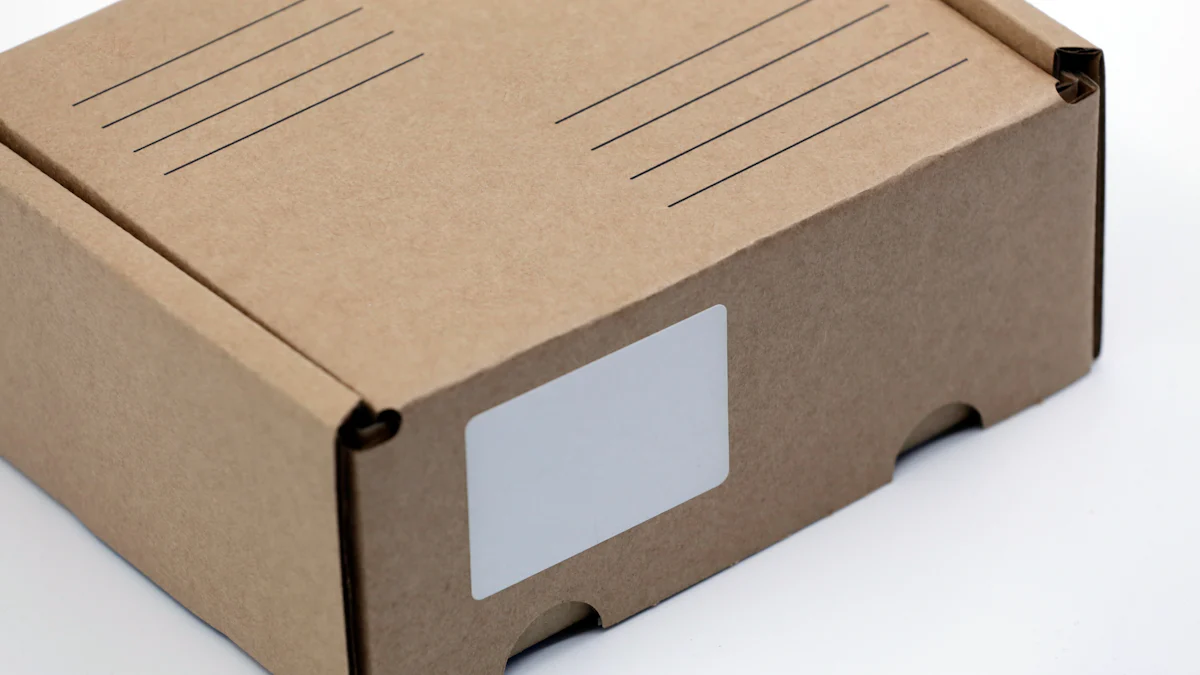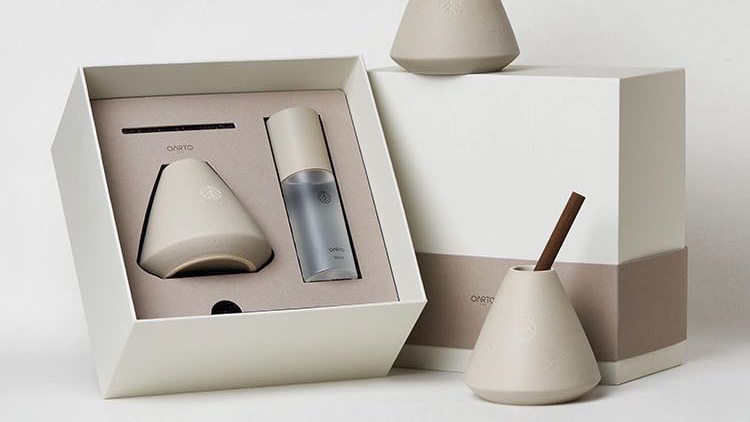In an era of brand-saturated social media feeds and perpetually evolving consumer tastes, the packaging you choose can be the silent ambassador of your product’s quality and ethos. Before a consumer even interacts with the item, the box or bag that carries it often shapes their first impression—can it offer an unboxing thrill, does it reflect sustainability values, does it mirror brand quality?
Studies repeatedly underscore the link between thoughtful packaging and consumer loyalty. For instance, the global personalized packaging market, covering everything from custom-printed boxes to tailor-made sleeves, is projected to surge from USD 38.36 billion in 2024 to about USD 66.77 billion by 2034 at a 5.70% CAGR (Precedence Research). In other words, brand personalization matters deeply to buyers—particularly in product categories where shelf or digital real estate is crowded.
This article explores custom vs. stock packaging—two distinct approaches that significantly influence how your brand is perceived. We’ll examine cost factors, the role of functionality, environmental considerations, and how to choose the right packaging based on your business goals. Understanding these nuances can help you make a strategic decision that elevates your brand’s presentation and resonates with the values of your target audience.
Understanding Custom Packaging and Stock Packaging
Packaging is not merely a vessel for transporting products; it’s a storytelling medium and a promise of quality. Yet for brands big and small, the question often arises: “Should we adopt a quick, mass-produced solution, or go the extra mile and develop custom packaging for our brand?”
Defining Custom Packaging
Custom packaging refers to tailor-made containers, boxes, or pouches meticulously designed around your product’s dimensions, aesthetic preferences, and brand personality. Instead of relying on a generic shape or standard size, you collaborate with packaging specialists to create a unique solution that communicates your brand identity.

- Bespoke Shapes and Designs
Custom packaging can reflect product distinctions—curved corners for a particular cosmetic jar, die-cut windows to highlight a food item’s texture or color, or an embossed logo that underscores brand prestige. - High Branding Flexibility
Colors, fonts, and finishes are orchestrated to align with your brand’s palette. Think about matching the exact hue of your brand’s Pantone color or adding metallic foil to accentuate logos. - Potential for Unboxing Moments
With e-commerce booming, custom packaging can enthrall consumers upon arrival. A box that opens in a reveal-like fashion or includes messages printed under flaps can turn first-time buyers into loyal fans.
Understanding Stock Packaging
Stock packaging, on the other hand, involves off-the-shelf solutions. These are pre-manufactured containers—brown cardboard boxes, standard poly mailers, or generic plastic jars—available in a range of fixed sizes.

- Cost-Efficient
Mass production drives down per-unit costs, making stock packaging a compelling choice for brands on a tight budget or for testing new product lines. - Immediate Availability
With minimal lead times, stock packaging can speed up your product’s launch cycle. No waiting for design prototypes or custom molds. - Limited Customization
You can apply stickers or labels, but structural adjustments or specialized branding might be minimal. As a result, brand differentiation can prove challenging when hundreds of companies share identical container designs.
By understanding these basic definitions, brands can evaluate which approach suits their objectives, whether it’s delivering a premium brand experience or ensuring quick, cost-effective shipping.
Key Differences Between Custom and Stock Packaging
While custom packaging and stock packaging both serve to contain and protect products, they diverge significantly in how they influence brand perception, cost structure, lead times, and consumer impact.
Brand Identity vs. Convenience
Custom Packaging
- Showcases brand identity front and center.
- Every visual cue—from color palette to typography—echoes brand values, forging emotional ties with consumers.
Stock Packaging
- Provides immediate, standardized solutions but lacks uniqueness.
- Branding might rely on superficial elements like labels or tape, falling short of immersive brand experiences.
Design Flexibility and Constraints
Custom Packaging
- Unlimited creative potential: if you dream it, you can usually produce it (within cost boundaries).
- Allows intricate shapes, inserts, or layering that matches the product’s silhouette.
Stock Packaging
- Limited set of shapes and standard dimensions, typically rectangular or cylindrical.
- Necessitates design workarounds, such as adding foam or paper fillers to secure items.
Cost and Production Processes
Custom Packaging
- Involves greater upfront investment—design fees, printing plates, die cuts, or specialized finishes.
- Economies of scale matter: with large orders, per-unit cost drops significantly.
Stock Packaging
- Lower barrier to entry, minimal design overhead.
- Consistent pricing per unit with no major reductions for bulk (beyond typical volume discounts).
Consumer Perception
Custom Packaging
- Delivers a cohesive brand message, often perceived as higher quality.
- Encourages brand loyalty, can justify premium product pricing.
Stock Packaging
- Potentially viewed as generic or utilitarian, lacking a distinct brand “voice.”
- May suffice in certain categories or for less brand-driven products.
| Feature | Custom Packaging | Stock Packaging |
|---|---|---|
| Branding Opportunities | Extensive (full design freedom) | Limited (mostly labels) |
| Fit and Functionality | Designed specifically for products | May not fit products perfectly |
| Speed of Availability | Longer lead times | Immediate |
| Cost | Higher initial investment | Generally lower |
Benefits of Custom Packaging for Branding
Branding transcends a simple logo or color scheme—it’s about how consumers feel about your product before they even use it. Custom packaging contributes to this intangible sense of brand personality and memorability.
High-Impact Brand Differentiation
Consumers face a deluge of product choices. Striking, custom-designed boxes or containers can capture attention, especially in a crowded marketplace. From a subtle pattern on an outer sleeve to a tri-fold box that reveals the product in stages, custom packaging sets you apart.
Storytelling and Emotional Connection
Packaging can narrate your brand’s story: local craftsmanship, eco-friendly ethos, or premium heritage. Imprinted messages or brand anecdotes on box flaps are subtle yet effective. Consumers who connect emotionally with your brand are more likely to remain loyal and even advocate for you.
Premium Perception
Think about unboxing a sleek smartphone or a handcrafted item delivered in meticulously designed packaging. The message is immediate: This product is special. In an environment where brand authenticity and exclusivity matter, custom packaging can help command higher prices and reflect an elevated brand standard.
Advantages of Stock Packaging: When to Choose It
While custom solutions shine in certain areas, stock packaging remains a foundational choice for brands prioritizing cost management, speed, and simplicity.
Affordability and Speed
For small businesses or startups, cost can be a deciding factor. Stock packaging offers relief from large initial outlays for design or custom printing. Also, minimal lead times allow for swift product launches—ideal for times when getting to market quickly is critical.
Standard Dimensions for Common Needs
Not all items require specialized protection. A brand shipping uniform-sized products—like books, DVDs, or standard jars—may find stock packaging entirely sufficient. Moreover, stock solutions come in many universal sizes, further simplifying logistics.
Reduced Complexity
Going custom demands collaboration with designers, procurement of sample proofs, and oversight of production runs. Stock packaging bypasses those steps, letting you devote bandwidth to other operations such as marketing, product design, or distribution.
Cost Considerations: Custom vs. Stock Packaging
Cost remains a key pivot point. Brands often wrestle with the question: “Is the added expenditure for custom packaging truly worth it?”
Upfront Investment
Custom packaging generally involves multiple cost drivers:
- Tooling and Die Costs: Creating unique packaging dies or molds is costly.
- Design Services: Professional designers and brand strategists might be needed.
- Minimum Order Quantities: Some manufacturers set high MOQs, forcing you to order more than you currently need.
Stock packaging, conversely, spreads the manufacturing cost over countless generic products, leading to significantly cheaper unit prices. You pay primarily for the packaging material plus shipping, with minimal or no design overhead.
Per-Unit Costs Over Time
If you anticipate large volumes or rapid growth, custom packaging can become more cost-effective per unit. Bulk orders often unlock attractive volume discounts. Over time, the brand-building benefits might also drive enough sales or allow premium pricing that offsets the initial expense.
Potential ROI
A brand using custom packaging to deliver a top-tier experience might generate stronger loyalty, repeat purchases, and social media buzz. For many, that intangible brand lift is a compelling reason to invest in custom packaging. On the flip side, companies with tight margins or stable, commodity-like goods may lean on stock solutions, seeing little advantage in spending more for packaging that won’t dramatically shift brand perception.
Functionality and Fit: How Packaging Affects Product Integrity
Packaging serves the practical purpose of safeguarding products from damage. If an item arrives broken or scuffed, that negative experience overshadows the best brand marketing.
Protective Features
Custom boxes can be engineered with snug compartments, foam inserts, or sealed enclosures that precisely match your product’s shape. For fragile or high-value goods, such exactness matters. The cost of a broken product or negative review can be steep—one that well-engineered packaging helps avoid.

Consumer Experience
Packaging that’s too large, forcing a brand to stuff it with bubble wrap or air pillows, signals wastefulness. Conversely, packaging that’s too small might risk product damage or appear inexpertly crammed. A balanced approach ensures that unboxing feels well-thought-out, and the consumer sees a brand that respects their product enough to package it gracefully.
Match with Product Requirements
Particularly in regulated sectors—food, cosmetics, or electronics—stock packaging may lack specific features or labeling space needed for legal compliance. Custom packaging addresses these nuances seamlessly, ensuring brand messaging, product disclaimers, and barcodes all align with requirements.
Customization Options: Tailoring Packaging to Your Brand
Customization doesn’t stop at structure; it often extends to how you incorporate brand visuals, messaging, and unique finishing touches.
Brand Aesthetics
From color matching your brand’s signature hue to choosing a specific font style for text, custom packaging ensures aesthetic fidelity. Perhaps your brand identity is minimalist and modern, or perhaps you champion an artisanal, nature-inspired vibe—custom packaging translates that persona into the packaging’s look and feel.
Innovative Design Features
Think about packaging that doubles as a display stand, or boxes that open like an unfolding flower. Innovations like embedded QR codes can direct consumers to tutorials or brand stories. Even inside box flaps can be an opportunity for brand messaging, clever illustrations, or playful instructions.
Personalization at Scale
Digital printing technology now makes it feasible to add individualized touches to packaging. Whether it’s printing the customer’s name on the box or referencing a location-specific motif, personalization fosters closer brand-consumer connections. The global personalized packaging trend further underscores this: it’s set to reach USD 66.77 billion by 2034—a clear sign that consumers crave products that feel tailor-made.
Impact on Brand Perception: Custom vs. Stock Packaging
Consumers associate packaging quality with product quality. Even if the item inside is top-notch, a bland or ill-fitting box can dampen the experience.
Consumer Expectations and Experience
In a highly visual culture—where unboxing videos on YouTube rack up millions of views—a distinct package can spark curiosity and brand buzz. Uniquely designed custom boxes might even prompt consumers to share photos or reviews, turning them into informal brand ambassadors.
Competitive Differentiation
Imagine walking down a store aisle or scrolling through an e-commerce platform. Among dozens of rectangular boxes or plain mailers, your brand’s packaging stands out due to striking color accents, structural creativity, or an intriguing shape. That immediate recognition can be invaluable.
Building Loyalty
Packaging is often a brand’s handshake—if it’s memorable, the consumer’s excitement or surprise might spill over to the product usage. This positive emotional association can lead to repeat purchases, brand recommendations, and a sense of brand pride in the consumer’s mind.
Sustainability in Packaging: Custom vs. Stock Solutions
Sustainability is no longer a buzzword: consumers expect brands to demonstrate genuine environmental responsibility. According to a StartUs Insights report, the average investment value in the packaging industry sits around USD 36 million, with over 306,000 companies globally. This breadth ensures a diverse range of eco-friendly packaging innovations.
Eco-Friendly Materials
- Recycled Cardboard: Common in both stock and custom solutions, reducing virgin material usage.
- Biodegradable Plastics: Some custom packaging integrates cornstarch-based wrappers or compostable films.
- Paper-Based Alternatives: Corrugated paper inserts can replace foam or plastic trays while still offering product protection.
Reducing Carbon Footprint
Custom packaging, if well-designed, can reduce shipping volume by molding around the product. This efficiency lowers shipping emissions and often resonates with green-minded consumers. Stock packaging might be more easily repurposed for multiple product lines, but if it’s not well-sized, it can lead to wasted space in shipping.
Meeting Consumer Demand
With consumer surveys showing strong support for sustainability, brands that align packaging choices with eco-friendly principles may see better brand sentiment. For instance, using minimal or recycled materials might offset a fraction of custom packaging’s cost by fostering brand loyalty among environmentally-conscious demographics.
Turnaround Time and Flexibility in Packaging Choices
In fast-moving markets, speed can be a decisive factor. Late shipments or postponed launches can cost you the first-to-market advantage.
Production Lead Times
Custom Packaging
- Requires design finalization, prototyping, manufacturer approval, and then production. The lead time can be several weeks or even months.
- If your brand is launching a new collection or seasonal product, planning well in advance is crucial.
Stock Packaging
- Ready for immediate order from catalogs or suppliers. Shipping times might be short, ideal for urgent restocks or unpredictable product demands.
Adaptability to Market Shifts
Brands sometimes pivot product lines quickly—perhaps you test a niche product or run a pop-up promotion. Stock packaging offers the convenience of agile scaling or downsizing, as you can buy in smaller batches. With custom packaging, you’re often locked into higher MOQs or reliant on supply chain stability.
Balancing Demand and Branding Goals
Many brands adopt a hybrid strategy. For their flagship product lines, they invest in carefully planned custom packaging. For supplementary or experimental product lines, they use stock solutions. This approach provides brand synergy where it matters most while keeping overheads in check for lower-priority SKUs.
Choosing the Right Packaging for Your Brand
How do you weigh these factors—cost, brand identity, sustainability, and agility—to pick the best packaging approach?
Assessing Business Goals
- Budget Constraints: Are you a startup with limited capital or an established brand ready to invest in a premium brand image?
- Product Differentiation: Do you compete in a category where packaging can offer a genuine edge, or is your product’s selling point relatively unaffected by presentation?
- Growth Plans: If you foresee scaling quickly, custom packaging might pay off in the medium term.
Hybrid Approaches
Not all packaging decisions must be either-or. For instance, you can:
- Use stock packaging for shipping outer boxes but create custom inserts that cradle products and reinforce brand visuals.
- Apply custom-printed labels or sleeves on standard containers for a partial but cost-effective brand presence.
Long-Term Vision and Scalability
If you plan to expand internationally, or add multiple product variations, investing in a well-thought-out packaging system may reduce future headaches. Packaging templates that can be adapted for new SKUs or brand expansions might justify the initial custom design costs.
Conclusion
Packaging is far more than a protective shell: it’s a vehicle of brand communication, a determinant of consumer perception, and often a crucial step in forging emotional brand loyalty. Custom packaging and stock packaging each bring distinct advantages:
- Custom Packaging: High-impact branding potential, personalized unboxing experiences, premium perception, but at higher cost and longer lead times.
- Stock Packaging: Cost-effective, ready-to-ship convenience, minimal design overhead, but with limited brand distinction.
From the lens of brand growth, the question “Which is better for branding?” depends heavily on your product category, budget constraints, sustainability priorities, and the type of consumer experience you wish to deliver. Many brands strike a balance—reserving custom packaging for hero products or core lines, and stock packaging for lower-stakes or short-run items.
As the global personalized packaging market heads toward $66.77 billion by 2034, it’s evident that consumers crave brand experiences that feel curated and unique. At the same time, not every brand can or should invest in fully customized solutions for every product. By reflecting on design goals, cost breakdowns, and consumer expectations, you can choose a packaging strategy that resonates with your brand story while staying mindful of practical constraints.
In the end, packaging remains a silent but powerful brand ambassador—whether it’s the crisp, minimal design of a custom box or the reliable consistency of a stock container. With the right approach, each can serve a role in propelling your product to center stage and reinforcing a brand identity that lasts long after the box is opened.
Contact for a Free Consultation!

